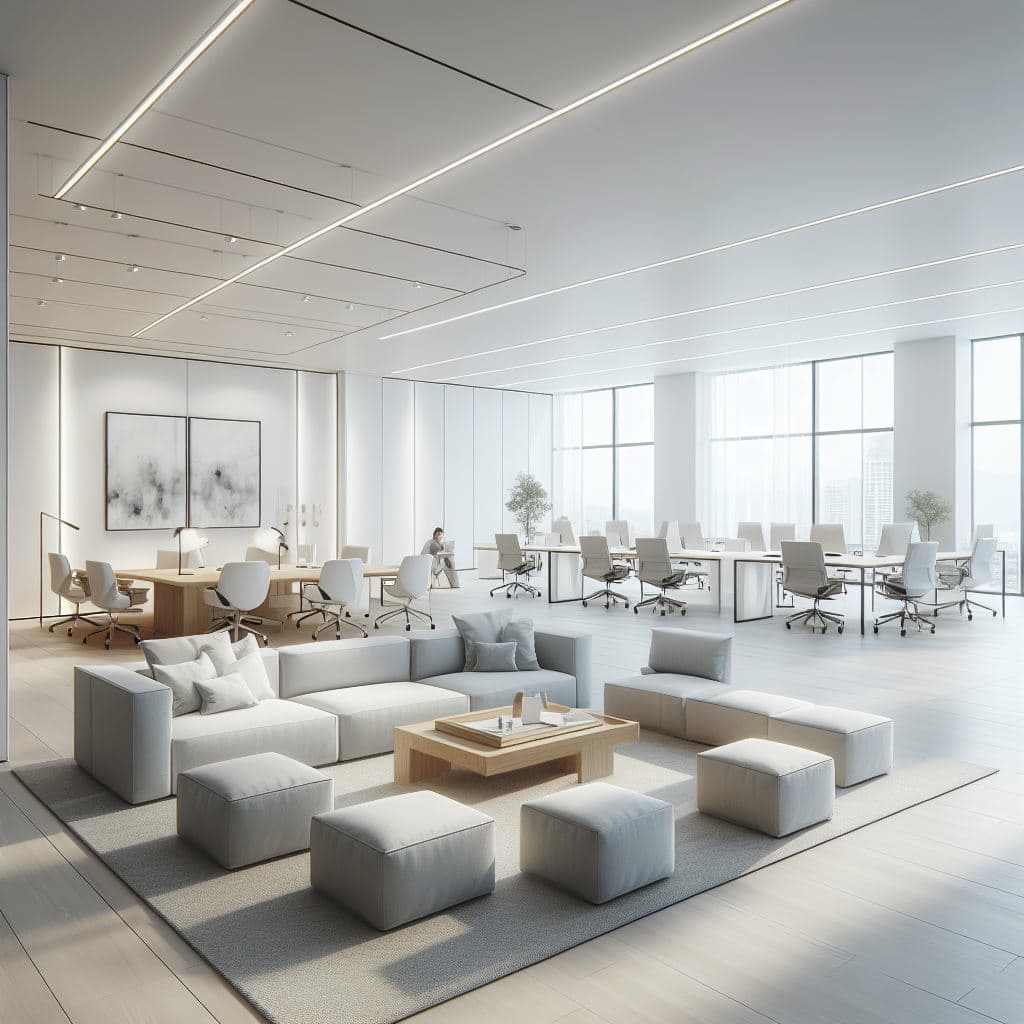写字楼办公如何通过低噪声系统创造专注的工作氛围
更新日期:
在现代办公环境中,专注力已成为提升工作效率的关键因素之一。然而,许多写字楼内部充斥着各种干扰源,尤其是噪声问题,常常成为影响员工集中精力的主要障碍。研究表明,持续的背景噪声不仅会降低工作质量,还可能引发疲劳和压力,进而影响整体团队表现。
为了应对这一挑战,越来越多的办公场所开始重视声学设计,通过引入低噪声系统来优化工作环境。这类系统通常包括隔音材料、吸音天花板以及智能通风设备,它们共同作用,有效减少外部和内部噪声的传播。例如,在嘉福临大厦,设计师采用了先进的声学解决方案,确保办公区域保持相对安静,从而为员工创造一个更加舒适和高效的空间。
低噪声系统的核心在于其多层次的设计理念。首先,建筑结构本身需要具备良好的隔音性能,这可以通过使用双层玻璃窗和加厚墙体来实现。其次,室内装饰材料的选择也至关重要,如地毯、软质家具和吸音板都能有效吸收回声,减少声音的反射和扩散。这些细节看似微小,却在整体环境中发挥着不可忽视的作用。
除了物理层面的改进,智能技术的应用也为噪声控制提供了新的可能性。现代办公大楼 often integrate automated systems that monitor noise levels in real-time and adjust environmental settings accordingly. For instance, HVAC systems can be programmed to operate at lower decibels during peak working hours, minimizing disruptive hums and vibrations that often go unnoticed but contribute to cognitive load.
另一个值得关注的方面是办公布局的优化。开放式的办公设计虽然促进了协作,但也容易放大噪声问题。因此,许多企业开始采用混合模式, combining open areas with soundproofed pods or private booths for tasks requiring deep concentration. This approach allows employees to choose an environment that suits their current needs, whether it's brainstorming with colleagues or focusing on individual projects.
此外,企业文化也在噪声管理中扮演着重要角色。鼓励员工使用耳机播放白噪声或自然音效,已成为许多公司的常见做法。这些声音 mask distracting conversations or equipment noises, creating a personalized auditory bubble that enhances productivity. Moreover, establishing clear guidelines on noise etiquette—such as designating quiet zones—can foster a collective awareness and respect for others' need for silence.
从长远来看,投资于低噪声系统不仅提升了员工的满意度和 retention rates, but also contributes to a company's overall image as a forward-thinking and employee-centric organization. Businesses that prioritize acoustic comfort often report higher levels of innovation and efficiency, as employees are better able to engage in complex problem-solving without constant interruptions.
总之,通过综合运用 architectural design, technology, and cultural practices, modern office spaces can effectively mitigate noise-related distractions. This holistic approach not only supports individual well-being but also drives organizational success by cultivating an environment where focus and creativity can thrive. As workplaces continue to evolve, the emphasis on acoustic optimization will likely become a standard rather than an exception, redefining what it means to work productively in the 21st century.